Iberian Adventure – Page 12
Flora, Fauna, and Flamenco
Today is Day 10. 5 more days to go! This morning we left Torremolinos headed for Seville (about 125 miles).
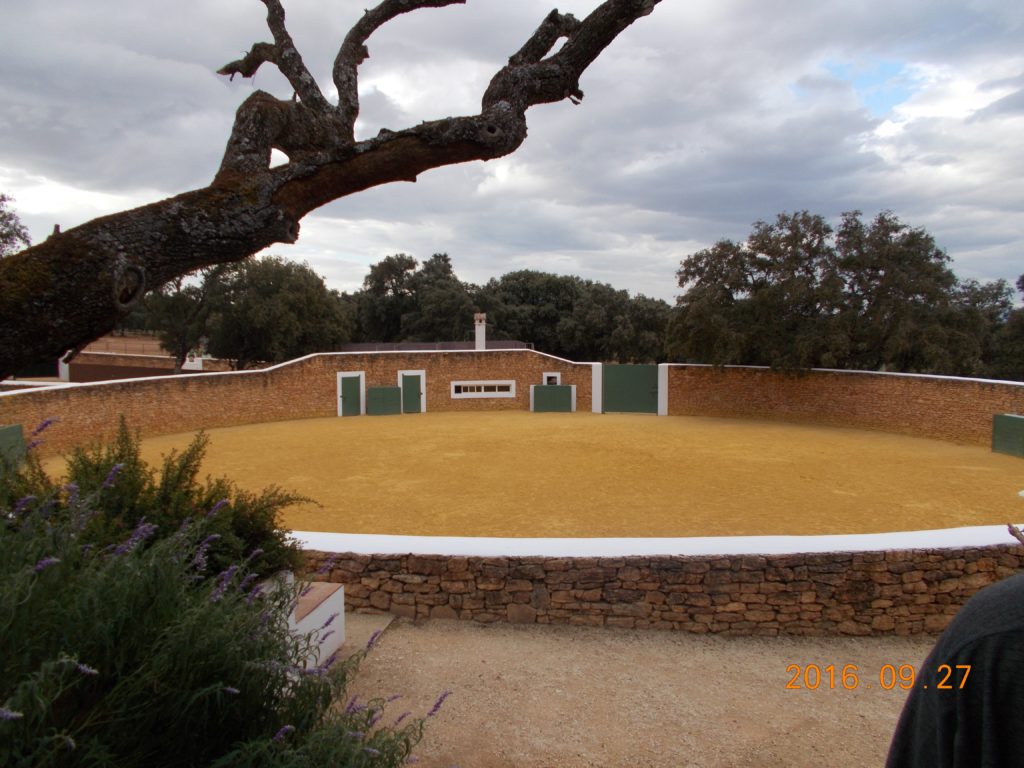
Our first stop is at a ranch that raises bulls for the arena, As I mentioned earlier, GCT does not offer visits to bull fights, but will visit bull ranches, This bull farm is the “Reservatauro Ranch” owned by Raphael Tejada. He has his own bull ring,
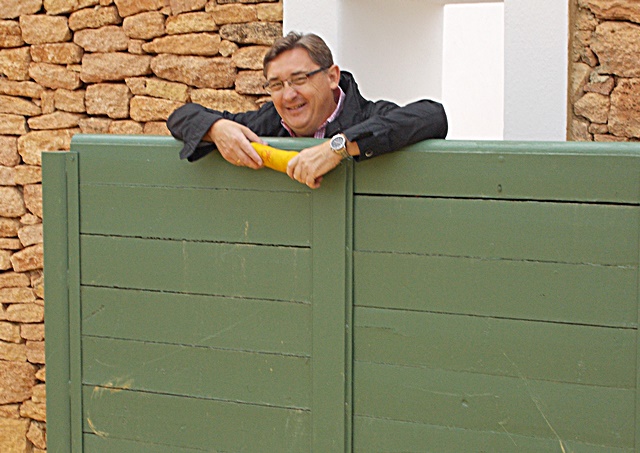
We are lucky to have a retired bull fighter named “El Pollo Juanjo”. Unfortunately, he was reluctant to enter the ring this morning. His last opponent refused to attack his yellow umbrella and he was booed.

Here is Juanjo in his younger, braver days. Can you guess which kid is Juanjo? (The yellow cape is a hint.)

Fortunately, we had “Melissa the Magnificent Matadora” on the bus. She showed us how it was done. Ole! Melissa!
That’s her Mom in the background filming the event for the” Bull Fighters Weekly” newspaper.

We drove around the ranch and saw many bulls and cows. The Spanish Fighting Bull (Toro Bravo, is an Iberian heterogeneous cattle population. It is primarily bred free range on extensive estates in Spain, Portugal, France and Latin America. Fighting bulls are selected primarily for a certain combination of aggression, energy, strength, and stamina.
Some trace the origins of the fighting bull to wild bulls from the Iberian Peninsular and their use for arena games in the Roman Empire, although the actual origins are disputed, genetic studies have indicated that the breeding stock have an unusually old genetic pool.
The fighting bull is characterized by its aggressive behavior, especially when solitary or unable to flee. Many are colored black or dark brown, but other colorations are normal. They reach maturity slower than meat breeds as they were not selected to be heavy, having instead a well-muscled “athletic” look, with a prominent complex of muscles over the shoulder and neck which gives the bull its distinctive profile and strength with its horns.
The horns are longer than in most other breeds and are also present in both males and females . Mature bulls weigh from 1,100 to 1,500 lbs.
Cattle have dichromatic vision, rendering them red-green colorblind and falsifying the idea that the color red makes them angry; they just respond to the movements of the muleta (cape). The red coloring is traditional and is believed to both dissimulate blood stains and provide a suitable light-dark contrast against the arena floor.
When the cattle reach two years or so, they are sent for testing. For the males, this establishes if they are suitable for breeding, the bullfight, or slaughter for meat. The testing for the bullfight is only of their aggression towards the horse, as regulations forbid their charging a man on the ground before they enter the bullfighting ring. They learn how to use their horns in tests of strength and dominance with other bulls.
At three years old males are no longer considered calves and are ready for bullfighting. The best bulls are kept for corridas de toros with full matadors. Under Spanish law they must be at least four years old and reach the weight of 1014 lbsg to fight in a first-rank bullring, 960 lbs for a second-rank one, and 900 lbs for third-rank rings. They must also have fully functional vision and even horns (which have not been tampered with) and be in generally good condition.
A very few times each year a bull will be “pardoned,” meaning his life is spared due to outstanding behavior in the bullring, leading the audience to petition the president of the ring with white handkerchiefs. The bullfighter joins the petition, as it is a great honor to have a bull one has fought pardoned.
The bull, if he survives his injuries, which are usually severe, is then returned to the ranch he was bred at, where he will live out his days in the fields. In most cases, he will become a “seed bull”, mated once with some 30 cows. Four years later, his offspring will be tested in the ring. If they fight well, he may be bred again.
TM BULL I?

This is a real matador. Hr answered questions for the group. Sorry, I misplaced his name…

We moved on to Ronda. A very interesting town. It is the home of a beautiful Pinsap tree (above) and the Puente Nuevo ( The”New Bridge”) (below) it is the newest and largest of three bridges that span the 390 ft deep chasm that carries the Guadalevin River and divides the city.

The construction of the newest bridge (the one that stands today) was started in 1759 and took 34 years to build. There is a chamber above the central arch that was used for a variety of purposes, including as a prison.
During the 1936-1939 civil war both sides allegedly used the prison as a torture chamber for captured opponents, killing some by throwing them from the windows to the rocks at the bottom of the El Tajo gorge.
Hemmingway wrote of this in “For Whom the Bell Tolls’

There are many statues in Ronda. There is a statue of Hercules in the main plaza …

… and a statue of Blas Infante (1985-1936) a politician, writer, historian and musicologist, but more famously known as the father of Andalusian nationalism. Who?

And a statue of a bull in front of the city bullring.

And a Statue of Dama Goyesca. (Lady dressed a la Goya). Who?
After a nice lunch in Ronda . I ate my breakfast built sandwich). Sandra and Bob ate a store bought ones,
On to Seville
We arrived in Seville and drove around the city looking at buildings built for the Ibero-American Exposition of 1929 . It was a world’s fair held in Seville, Spain, from 9 May 1929 until 21 June 1930. 85 years ago!

The main stop was at the “Plaza de Espana” the biggest Expo building. Countries in attendance of the exposition included: Portugal, the United States, Brazil, Uruguay, Mexico, Peru, Argentina, Chile, the Republic of Colombia, Cuba, Venezuela, the Dominican Republic, Bolivia, Panama, El Salvador, Costa Rica, and Ecuador. Each Spanish Region and each of the Provinces of Andalisia were also represented.
A majority of the buildings were built to remain permanent after the closing of the exposition. Many of the foreign the buildings, including the United States exhibition building, were to be used as consulates after the closing of the exhibits.

The Plaza was used as a setting recent “Star Wars” movie.
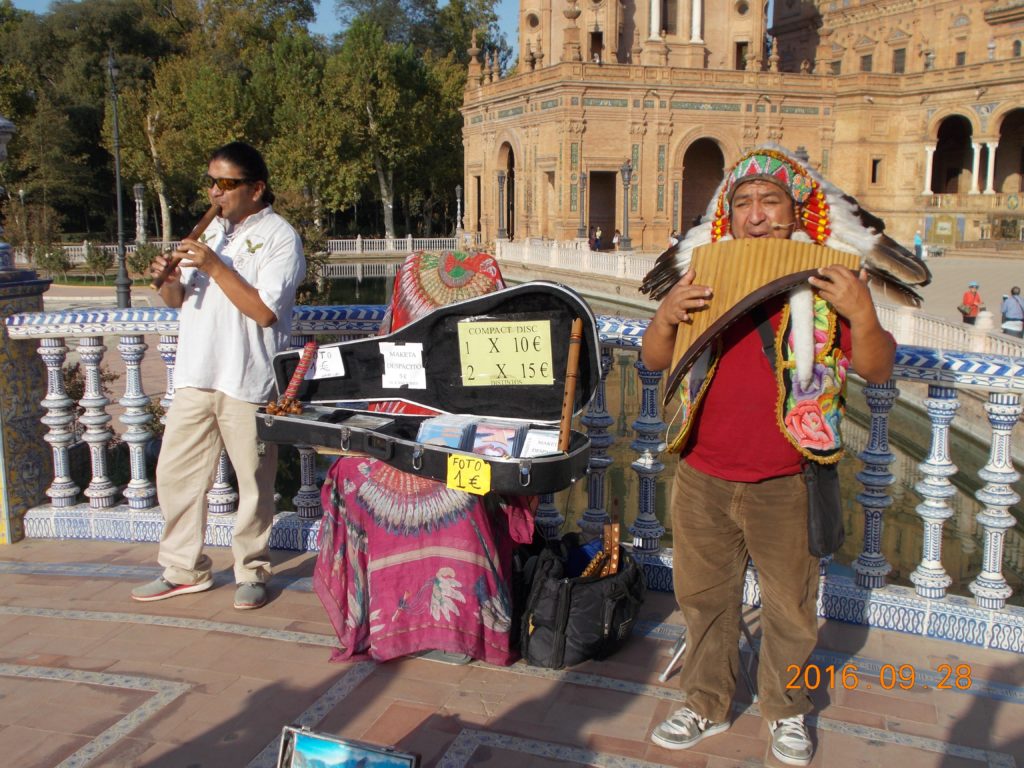
It is now a venue for Street musicians and Gypsy peddlers.

The peddlers would be on the look out for police. If they saw one, they would yank the strings and bundle up their stuff and slip away.
We also stopped at the Maria Luisa Park AKA Pigeon Park.

A portion of the park has a small plaza where you can feed the pigeons that are really friendly and well behaved (no pooping).. Some of them sit over your shoulder or on the hand and is really a fun experience.
Of course there is a lady selling bird food that makes them friendly and unusually well mannered.
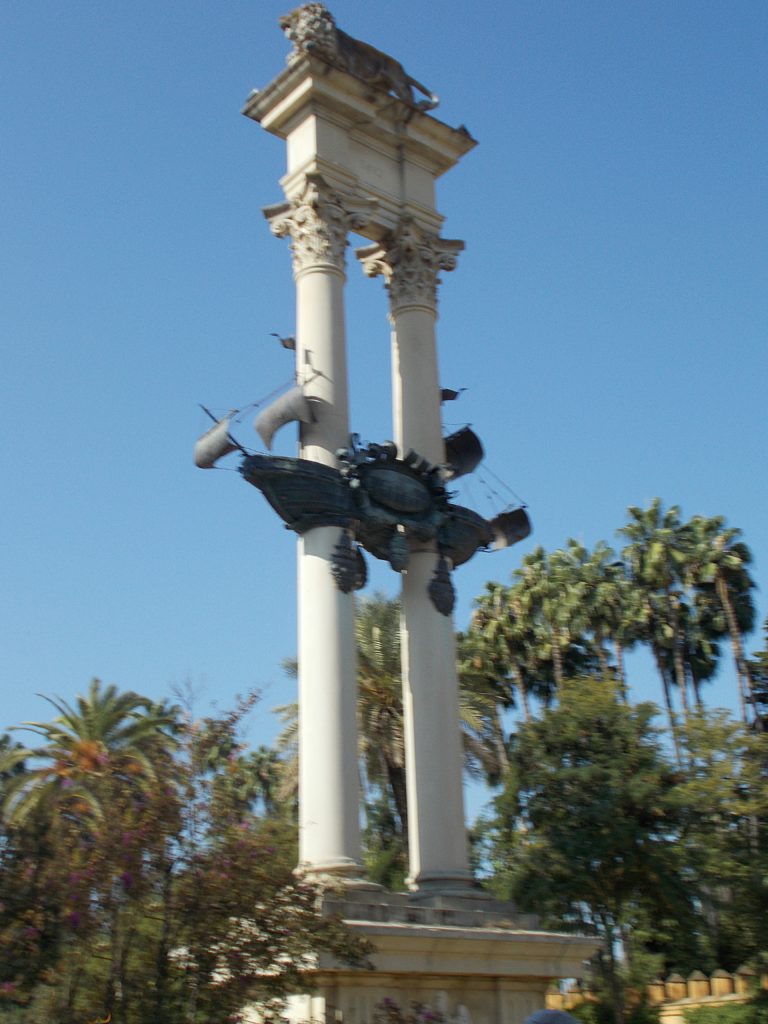
On the way to the Seville cathedral we passed this monument to Columbus which consists of the caravel Santa Maria between two towering white columns with a lion on top. Kinda odd looking!

Our first glimpse of the Seville Cathedral was of the Giralda Tower through an archway near the “Alkazar” This is the 3rd largest Cathedral in Europe. St Peter’s, Rome and St Pauls, London being larger.

Seville Cathedral, AKA Cathedral of Saint Mary of the See (Episcopal See) was built in the 15th century on the site of a 12th-century mosque, is one of the largest and most impressive churches in the world. After its completion in the early 16th century, Seville Cathedral supplanted the Hagia Sophia Mosque in Constantinople as the largest cathedral in the world at that time.
The Seville Cathedral was built to demonstrate the city’s wealth, as it had become a major trading center in the years after the Reconquista in 1248. In July 1401, city leaders decided to build a new cathedral to replace the grand mosque that served as the cathedral until then.
According to local oral tradition, the members of the cathedral chapter said: “Let us build a church so beautiful and so grand that those who see it finished will think we are mad”.
Construction continued until 1506. The clergy of the parish offered half their stipends to pay for architects, artists, stained glass artisans, masons, carvers, craftsman and laborers and other expenses.
The Giralda is the bell tower of the Cathedral of Seville. Its height is 343 feet, and its square base is 23 feet above sea level and 44 feet long per side. The Giralda is the former Minaret of the mosque that stood on the site under Muslim rule.

Here is an aerial view complements of our GCT drone. It’s huge!

Seville Cathedral has fifteen doors on its four facades. Each one has a name and is of architectural and historic interest.
Above the “Door of the Lizard” hangs a stuffed crocodile. and an elephant Tusk

The nave is huge it is the longest nave of any cathedral in Spain
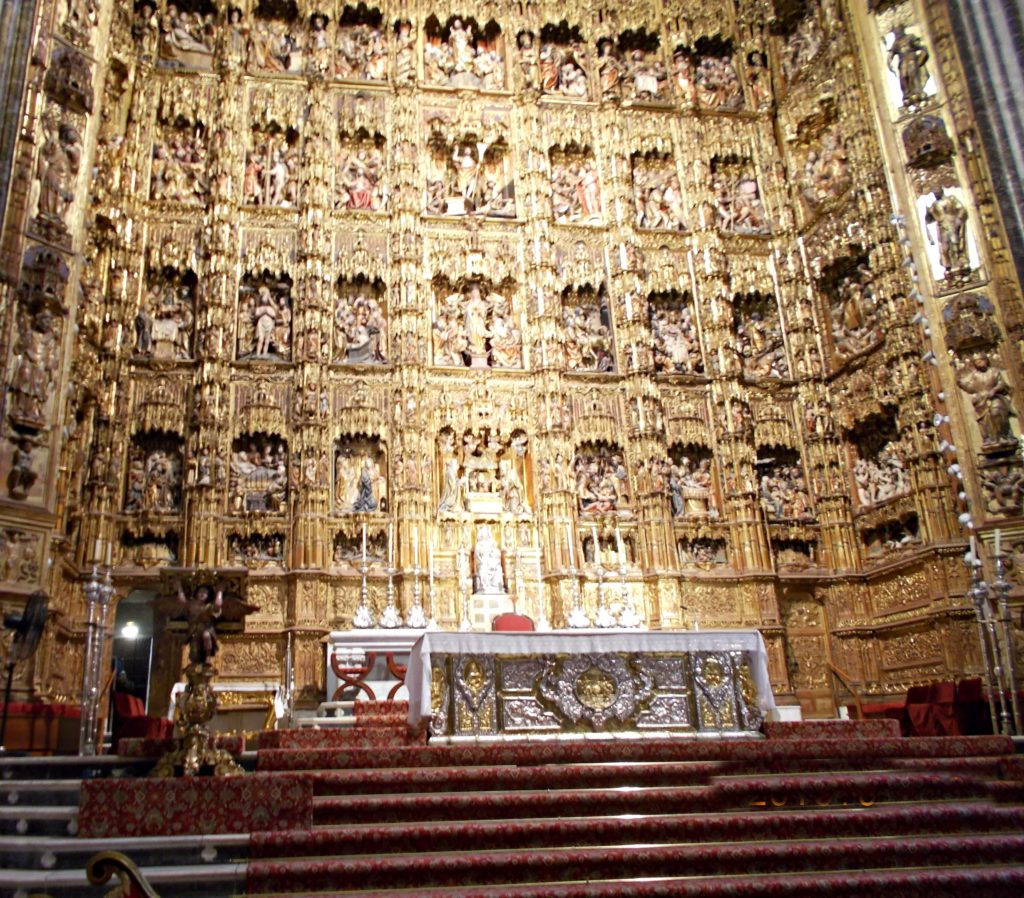
The vast gilded Gothic retablo above the altar is of carved scenes from the life of Christ. This altarpiece was the lifetime work of a single craftsman, Pierre Dancart.

This painting hangs in the sacristy. It is of Saints Justa and Rufina by Goya are venerated as martyrs.
Their legend states that they were sisters and natives of Seville who made fine earthenware pottery for a living, with which they supported themselves and many of the city’s poor.
Justa was born in 268 AD, Rufina in 270 AD, of a poor but pious Christian family. During a pagan festival, they refused to sell their wares for use in these celebrations. In anger, locals broke all of their dishes and pots. Justa and Rufina retaliated by smashing an image of Venus.
The city’s prefect, Diogenianus, ordered them to be imprisoned. Failing to convince them to renounce their faith, he had themtortured on the rack and with iron hooks. This method also having failed, they were imprisoned, where they suffered from hunger and thirst.
They were then asked to walk barefoot to the Sierra Moreno; when this did not break their resolve, they were imprisoned without water or food. Justa died first. Her body, thrown into a well, was later recovered by the bishop Sabinas. Diogenianus believed that the death of Justa would break the resolve of Rufina. However, Rufina refused to renounce her faith and was thus thrown to the lions.
The lion in the amphitheater, however, refused to attack Rufina, remaining as docile as a house cat. Infuriated, Diogenianus had Rufina strangled or beheaded and her body burned. Her body was also recovered by Sabinus and buried alongside her sister in 287 AD.
So much for breaking a little crockery!
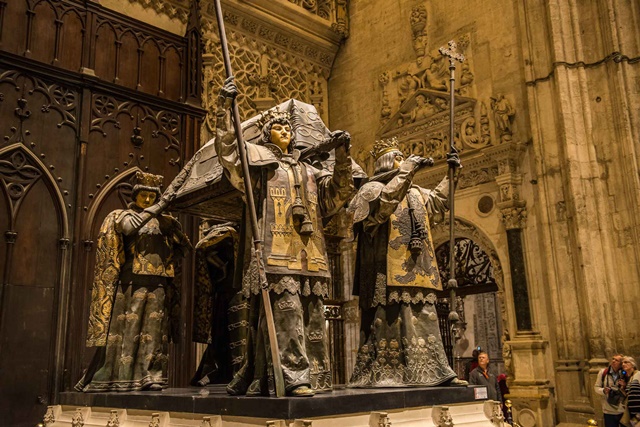
Final cathedral picture: Columbus’ tomb. Two sites claim to hold his bones the Seville Cathedral in Spain, and the Columbus Lighthouse at Santo Domingo in the Dominican Republic. Columbus was buried in that Spanish city of after dying there in 1506.
Spanish researchers said Friday they have resolved a century-old mystery surrounding Christopher Columbus’s burial place, which both Spain and the Dominican Republic claim to be watching over. Their verdict: Spain’s got the right bones.
“There is absolute matchup between the mitochondrial DNA we have studied from Columbus’ brother and Christopher Columbus,” said Marcial Castro.
Castro and his research colleagues have been trying in vain for years to convince the Dominican Republic to open up an ornate lighthouse monument in the capital Santo Domingo that it says holds the remains of the explorer.
Castro stressed in an interview that, although his team is convinced the bones in Seville are from Columbus, this does not necessarily mean the ones in Santo Domingo are not. Columbus’ body was moved several times after his death and the tomb in Santo Domingo might conceivably also hold part of the right body. “We don’t know what is in there,” Castro said.
Stay Tuned!

Here is an areal view of the nearby Alcazar. We’re keeping the drone busy today.
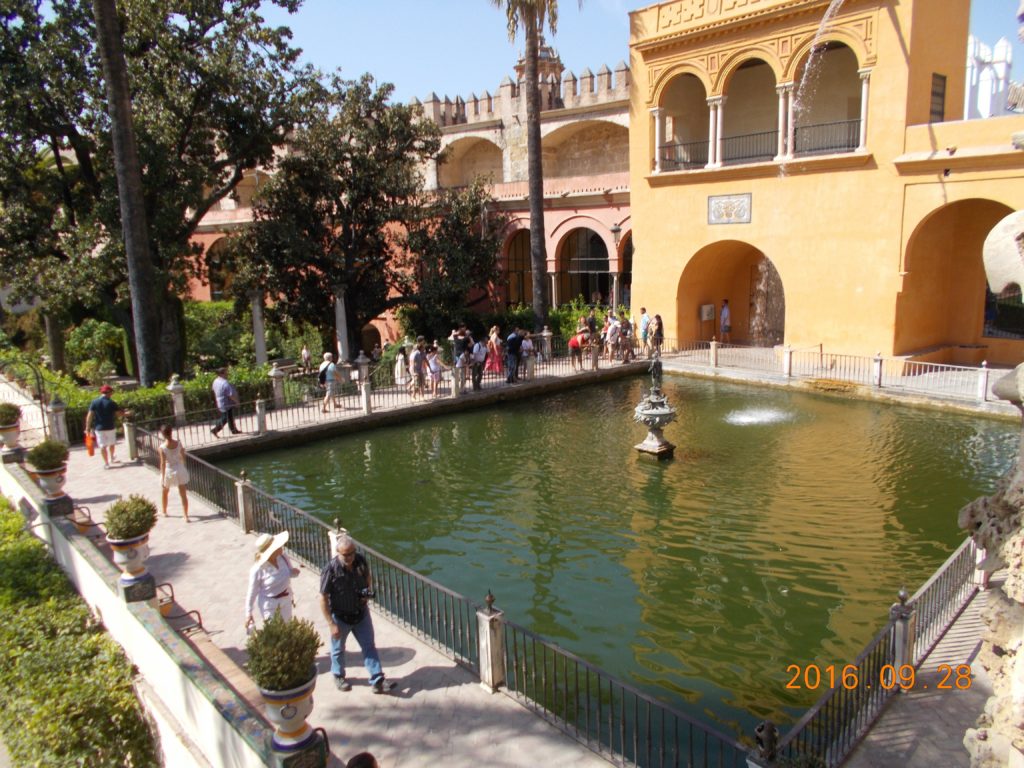
There are many courtyards, pools, fountains, and gardens in the Alkazar.

Here’s another

Yet another court yard.

And another. This one may have been used as a setting in an episode of the TV series “Game of Thrones”.

Or it could have been this one.
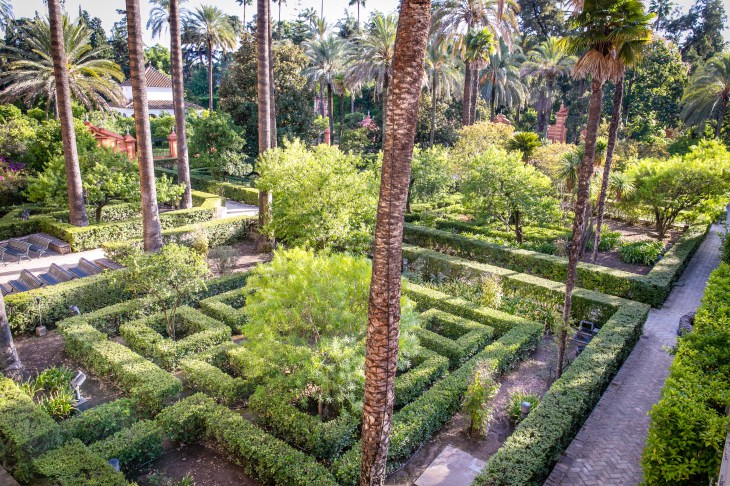
This is one of the manicured gardens.

The “Baths of Lady María de Padilla” are rainwater tanks beneath the Patio del Cruzero. The tanks are named after María de Padillr , the mistress of Peter the Cruel

Born in Burgos, Castile, Spain, on August 30, 1334, Peter the Cruel was the Spanish king of Castile and León, son and successor of Alfonso XI. He was charged by his contemporaries with incredible cruelty (hence the name?), but later acquired the nickname “Peter the Lawful” when he was viewed by historians as a strong executor of justice.
Peter began his reign at the age of 15. In 1356, he engaged in constant wars with Aragon. He was murdered by Henry, Du Guesclin on March 23, 1369, in Montiel, France.
“Speak softly and carry a huge sword'”
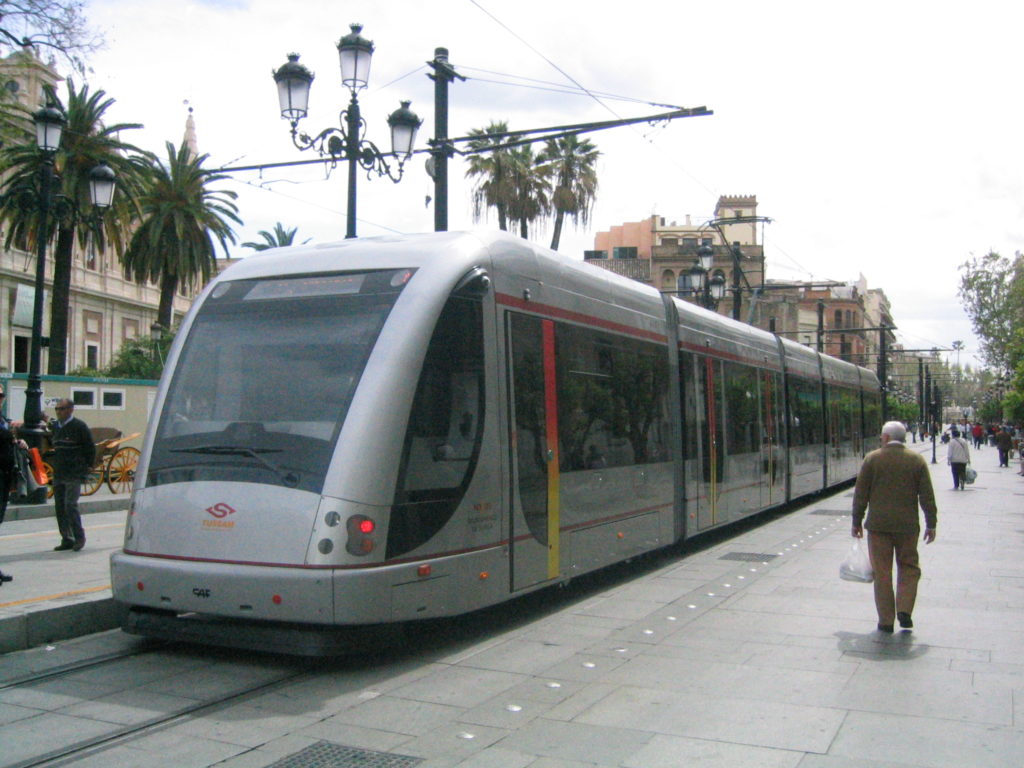
We escaped Peter’s clutches and caught a Metro back to our hotel. The metro was clean, quiet, and fast.

A woman saw me with my walking stick and got up. Boy! that made me feel old, but I took the seat anyway.
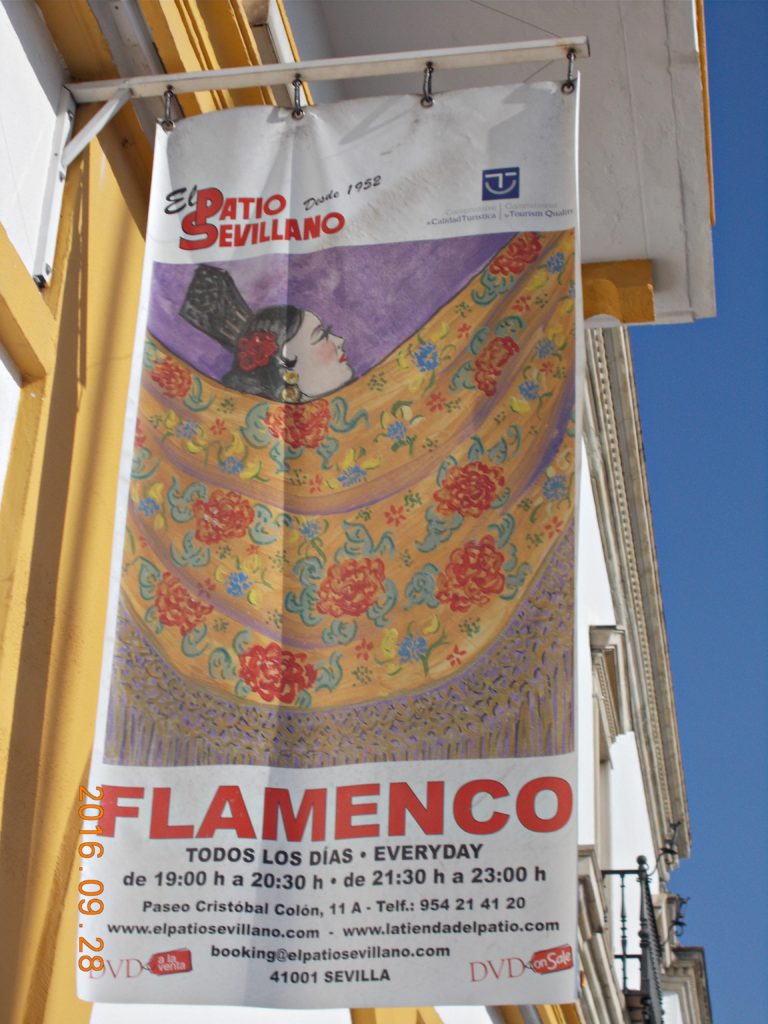
In the evening we went as a group to the “Patio Sevillano ” for dinner, a flamenco dress exhibition and a real Flamenco dance show.

While we had dinner we were treated to a dress exhibition.
Juanjo and one of the Falmenco dancers showed us her dresses with Juanjo’s help. I think Juanjo may have wanted to try it on?
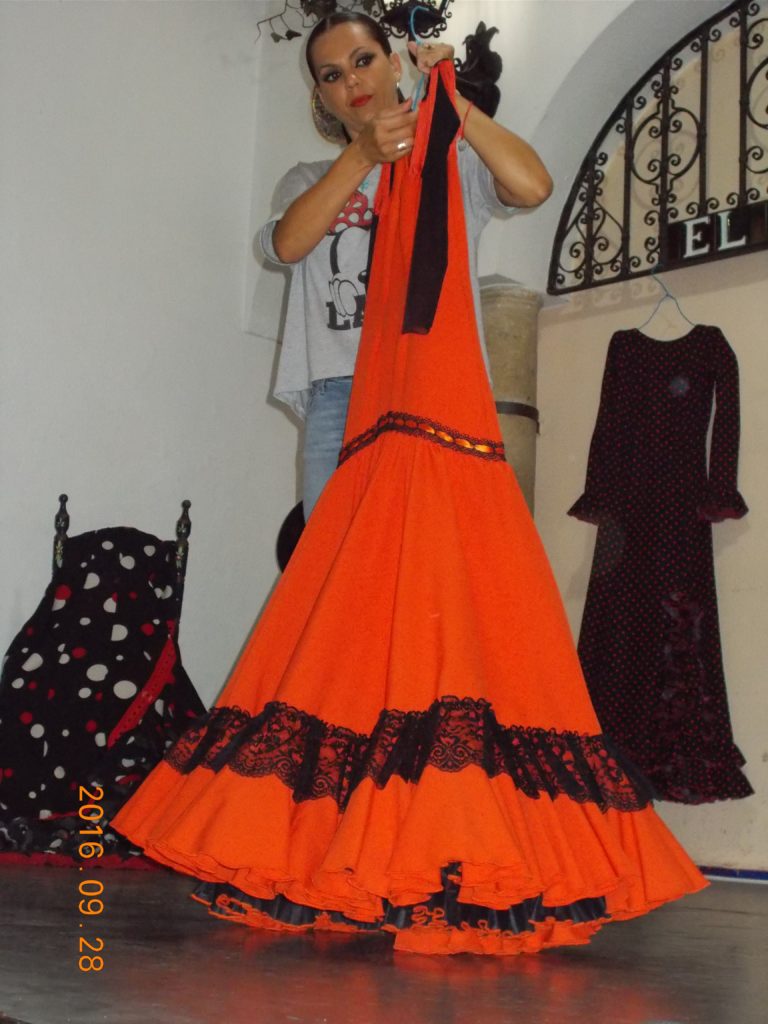
Some of these dresses and other costume items can cost hundreds of Euros.


The show was exciting and fiery. Lots of beautiful dresses, guitar music, foot stamping, castanet clicking, Spanish singing and music, and lively action. It was super. We were yelling OLE!, OLE! over and over. I could hardly hold my Sangria!
We were not allowed to photograph during the show (which lasted 1.5 hours), but at the end they turned the lights up so we could shoot.
After that we took our bus back to the hotel and I crashed, Day 11! Another great day!
OLE!
Go To Page 13










































